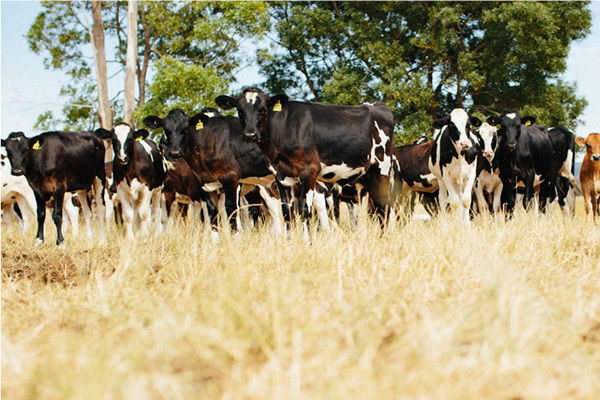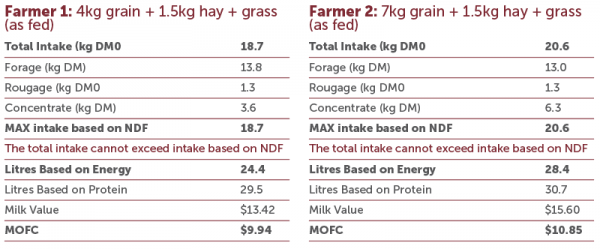The Economics Of Feeding In The Springtime
Springtime is the time of year where many farmers wind back the dial in the dairy and feed a few less kilos in the bale as there is ample grass in the paddock.
On the left is a feed budget for a 550kg mid-lactation cow in mid-spring. In mid-spring cows are consuming a protein rich pasture-based diet and are consuming enough protein to produce 29.6L. However, this farmer having dropped back the grain in only has enough energy to make 24.5L.
On the right is a feed budget for the same cow at the same stage of lactation but the farmer has resisted the temptation to turn the dial down. There is still an excess of protein in the diet, however the balance between the protein and energy is much closer.
You may notice the milk income after feed costs (MOFC) is higher for farmer 2. The income is based on 1 cow so when you times it by your herd size the difference in income per day is substantial. The pasture costs are based on Southern Victoria numbers so for Northern Victoria the economics make even more sense. As mentioned earlier conserved fodder is an important thing to consider. In a 300-cow herd if each cow is eat-ing 0.8kg DM less grass per day that adds up 21.6t DM extra conserved fodder over the 90 days of spring.
The other aspect to consider is the production of the cow through out the rest of the lactation. Basically, all cows if fed correctly follow a similar decline for the rest of the lactation however if the cattle a falling from a higher point their plateau is not as low. The better they are producing in spring, the better they will produce come summertime.
Overall, there is plenty to think about before turning the dial down this spring. Given the current economic and environmental conditions there is plenty of merit in keeping the dial where it is.
Your success is our success so any advice we give is for the benefit of your business.

